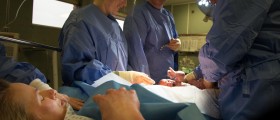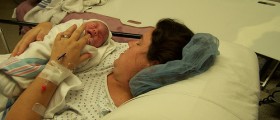
It is important to recover from the major surgery that a c-section indeed is (though we forget about this sometimes, as they seem like an every-day occurrence!) as well as possible. Healing takes time, and your body, especially your uterus, needs to rest. But in fact, most doctors would recommend waiting for about 18 to 23 months, depending on the doctor you ask, before trying for another baby. Which is for many doctors the same time period they recommend for women who gave birth vaginally as well. The best time to conceive depends on your overall health, of course. Getting pregnant again less than six months after you had a cesarean poses an increased risk of uterine rupture, which can quickly turn into a life-threatening emergency. Babies who were conceived within half a year of their mother having a c-section also tend to be born with lower birth weights, and have an increased rate of other complications.
Of course, we're not trying to scare you. If you get pregnant any way, the chances are that you will be just fine, and will just need a little extra prenatal care. Bodies are often a lot stronger than we give them credit for, even after they have been put under all kinds of stress. What can you do to lessen the chance of complications in the future if you are having a c-section? Evidence indicates that the single layer stitches that many obstetricians perform increase the chances of a uterine rupture during future pregnancies and births. Asking for double-layer uterine suturing, which means two layers of stitches in plain English, can help you be safer in the future, and may also mean that your risk of complications is decreased if you get pregnant sooner after your c-section.













Your thoughts on this
Loading...